Cancer Types
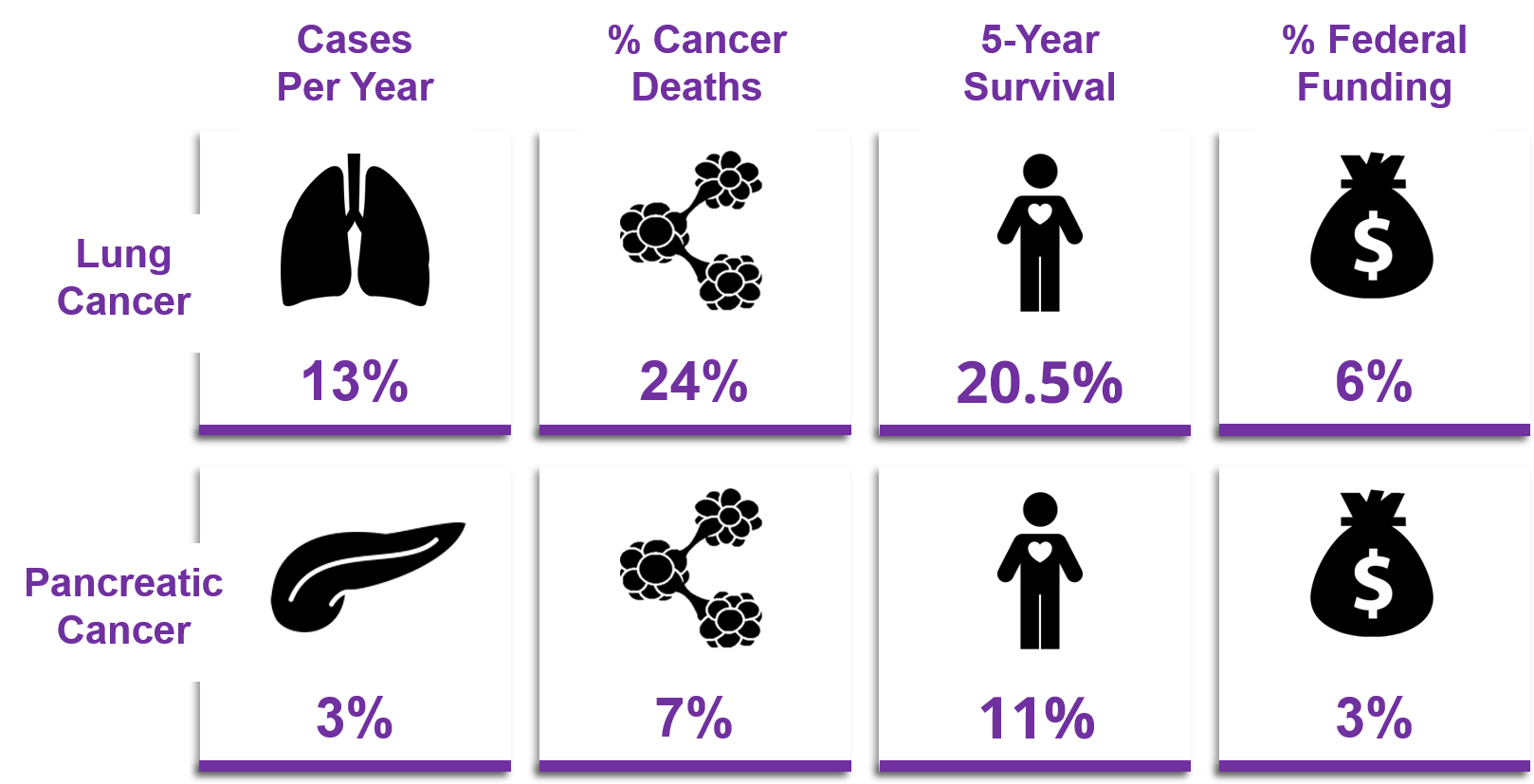
Lung cancer (LC) ranks as #1 in cancer deaths in the US and worldwide. Pancreatic cancer (PC) ranks as #3 in the US and top 10 in the world. From 1992-2017, the annual death rate for LC in the U.S. has fallen from 60 to 40 per 100,000, whereas PC has remained steady at 11 per 100,000. Despite relative advances for LC, both remain challenging for early diagnosis and treatment.
Skipper Bio Med was created to accelerate early detection and treatment pipelines needed to improve LC and PC patient outcomes. Skipper works with clients to develop a coordinated strategy and facilitate engagement with relevant key opinion leaders to ensure research innovations will generate transformative technologies that will reach patients.
Pancreatic Cancer

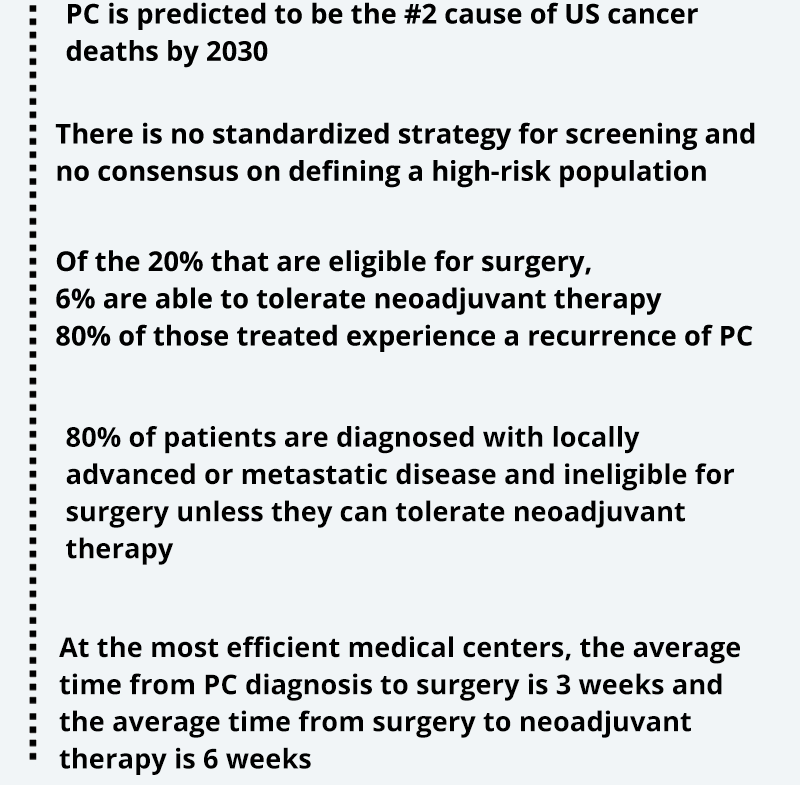
Pancreatic Cancer Biomarkers
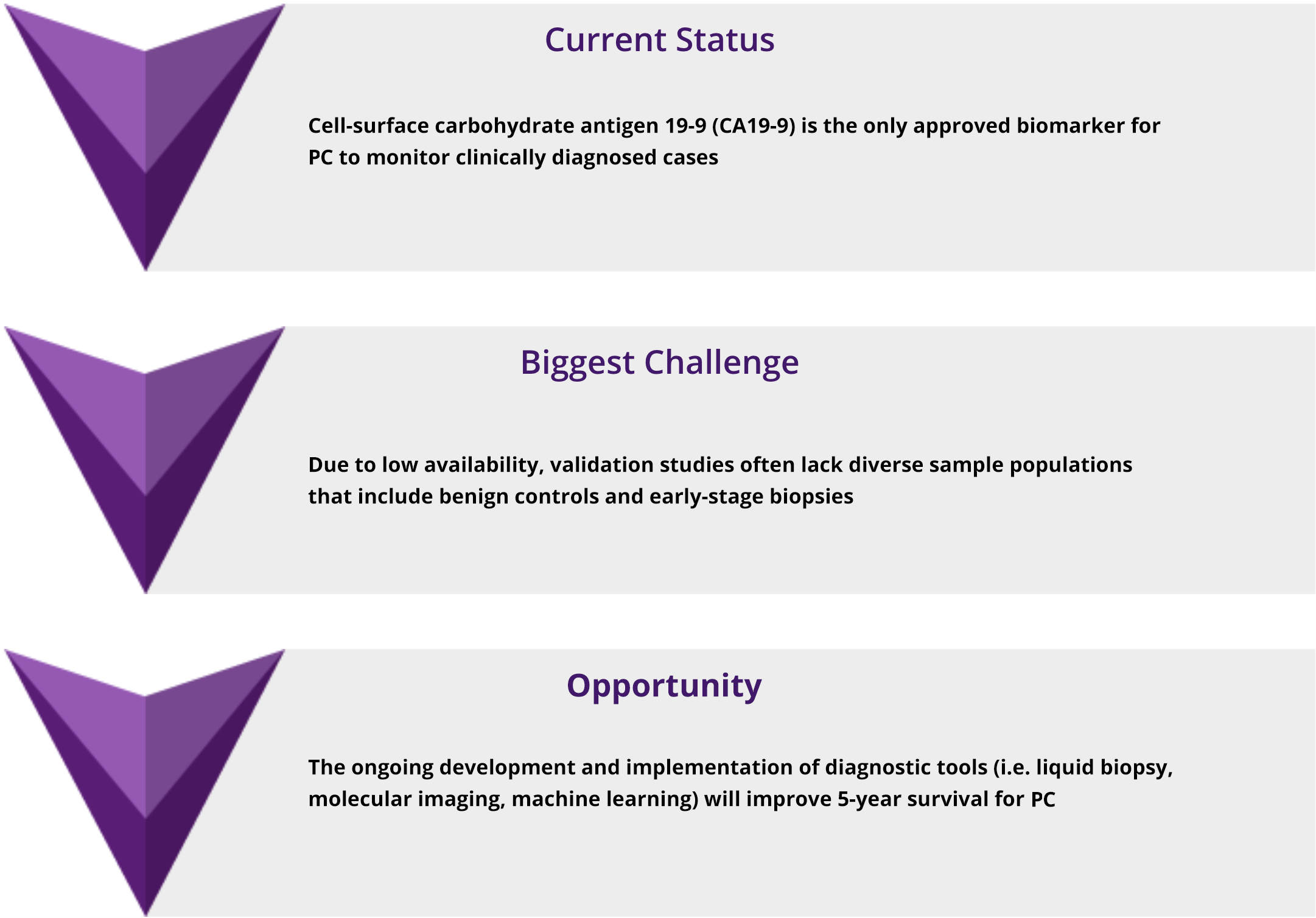
Current Status
Cell-surface carbohydrate antigen 19-9 (CA19-9) is the only approved biomarker for
PC to monitor clinically diagnosed cases
Biggest Challenge
Due to low availability, validation studies often lack diverse sample populations
that include benign controls and early-stage biopsies
Opportunity
The ongoing development and implementation of diagnostic tools (i.e. liquid biopsy,
molecular imaging, machine learning) will improve 5-year survival for PC
Pancreatic Cancer Therapeutics
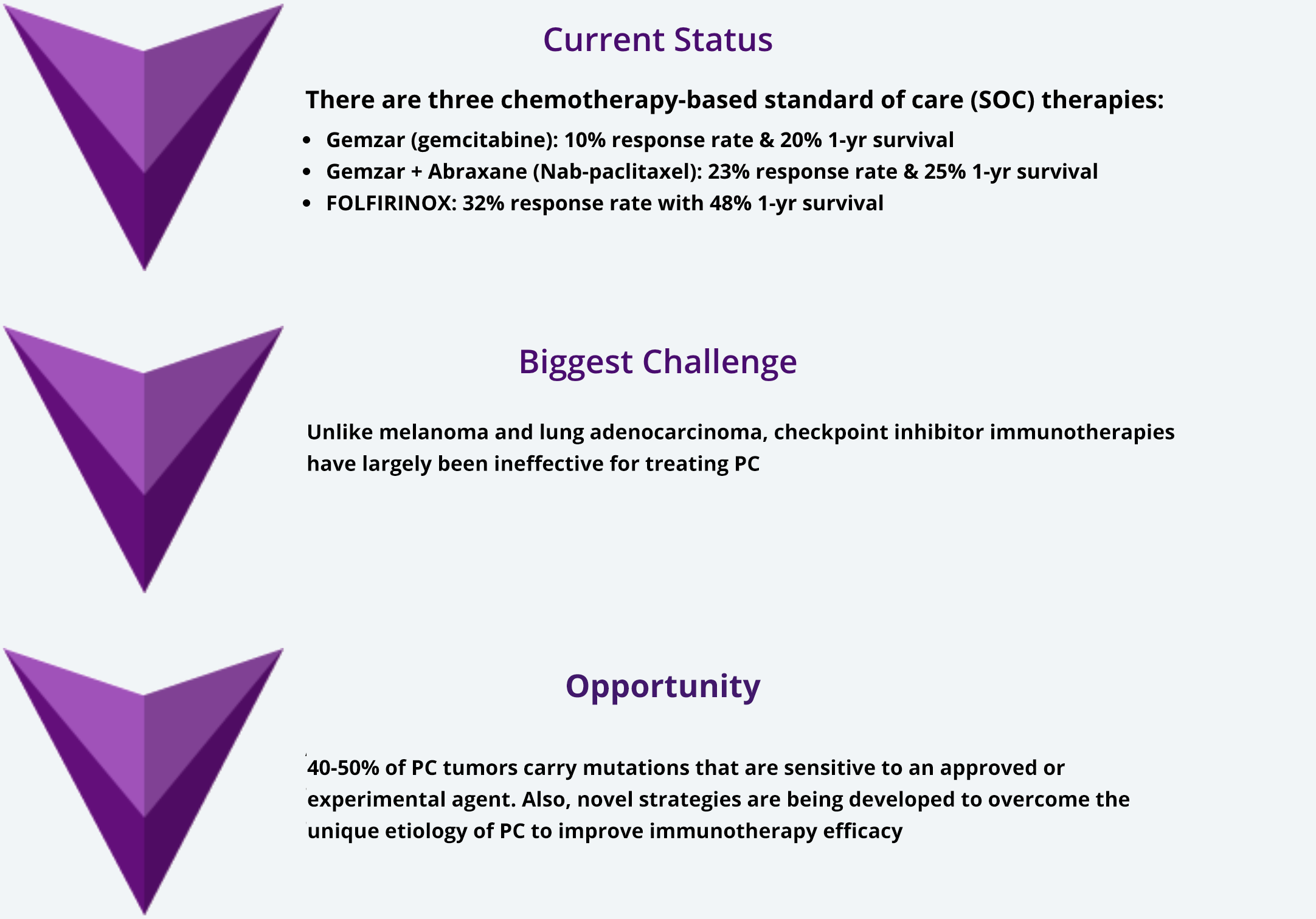
Current Status
There are three chemotherapy-based standard of care (SOC) therapies:
– Gemzar (gemcitabine): 10% response rate & 20% 1-yr survival
– Gemzar + Abraxane (Nab-paclitaxel): 23% response rate & 25% 1-yr survival
– FOLFIRINOX: 32% response rate with 48% 1-yr survival
Biggest Challenge
Unlike melanoma and lung adenocarcinoma, checkpoint inhibitor immunotherapies have largely been ineffective for treating PC
Opportunity
‘40-50% of PC tumors carry mutations that are sensitive to an approved or experimental agent. Also, novel strategies are being developed to overcome the unique etiology of PC to improve immunotherapy efficacy
Lung Cancer
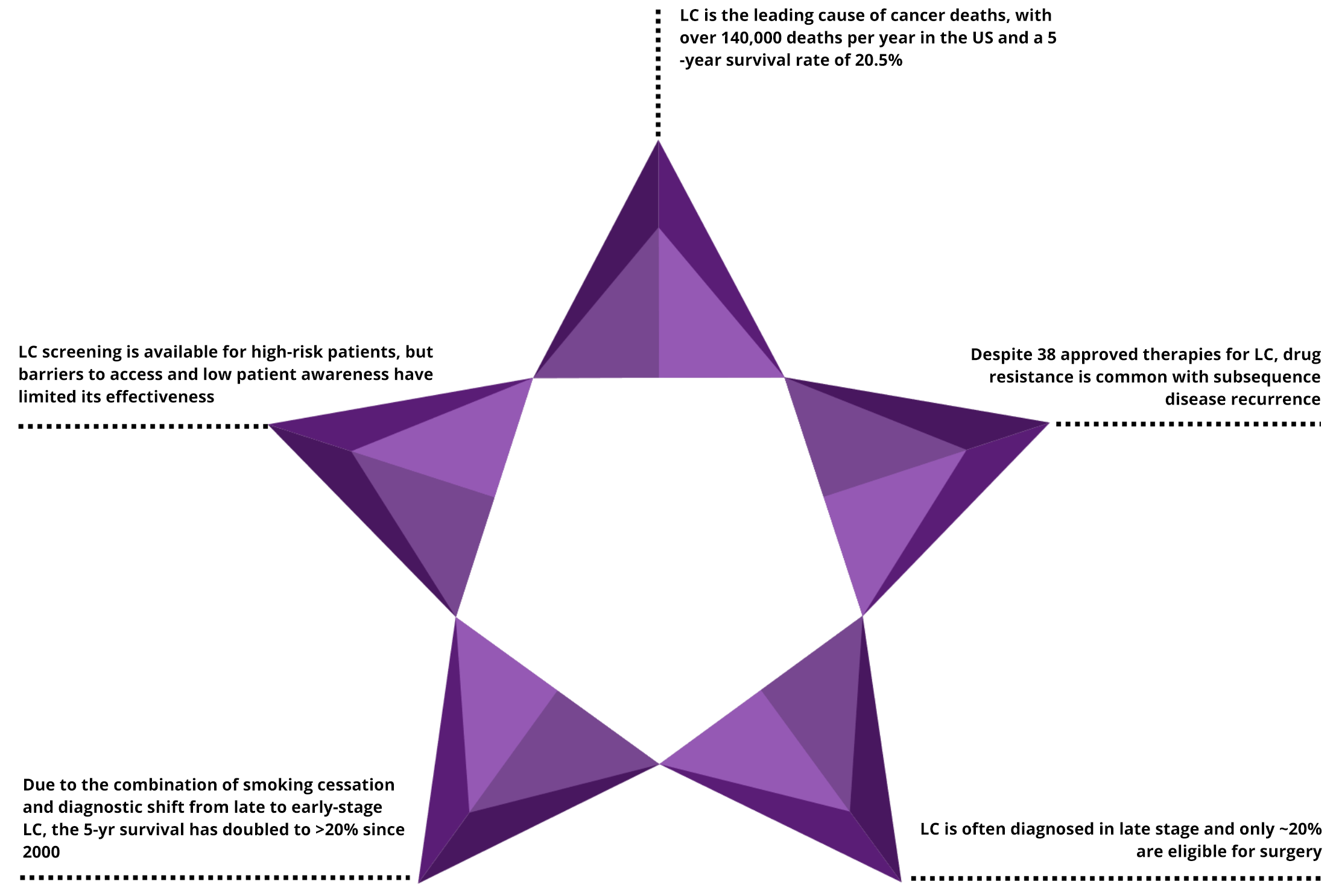
LC screening is available for high-risk patients, but barriers to access and low patient awareness have limited its effectiveness
Despite 38 approved therapies for LC, drug resistance is common with subsequence disease recurrence
Due to the combination of smoking cessation and diagnostic shift from late to early-stage LC, the 5-yr survival has doubled to >20% since 2000
LC is often diagnosed in late stage and only ~20% are eligible for surgery
Lung Cancer Biomarkers
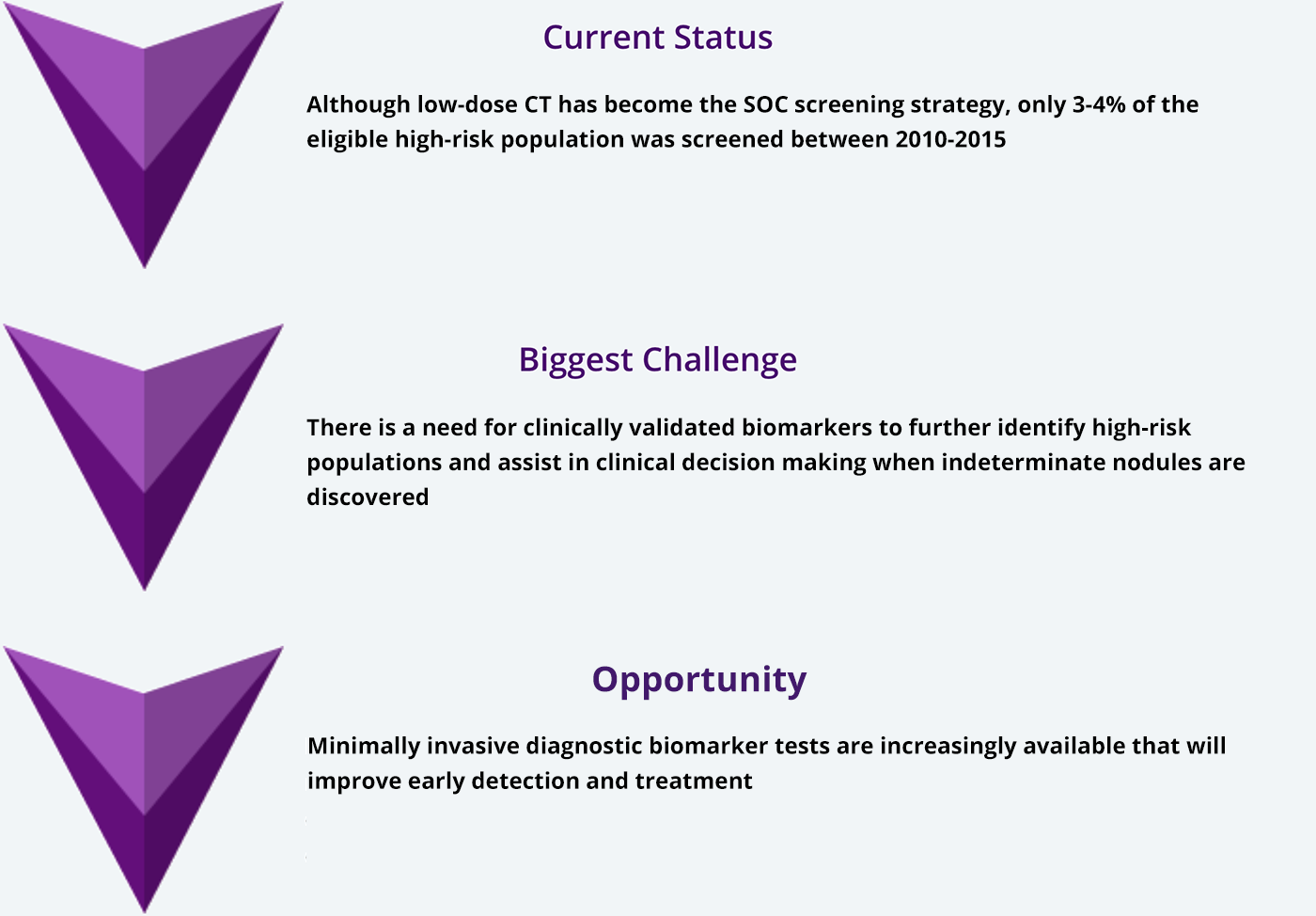
Current Status
Although low-dose CT has become the SOC screening strategy, only 3-4% of the eligible high-risk population was screened between 2010-2015
Biggest Challenge
There is a need for clinically validated biomarkers to further identify high-risk populations and assist in clinical decision making when indeterminate nodules are discovered
Opportunity
Minimally invasive diagnostic biomarker tests are increasingly available that will improve early detection and treatment
Lung Cancer Therapeutics
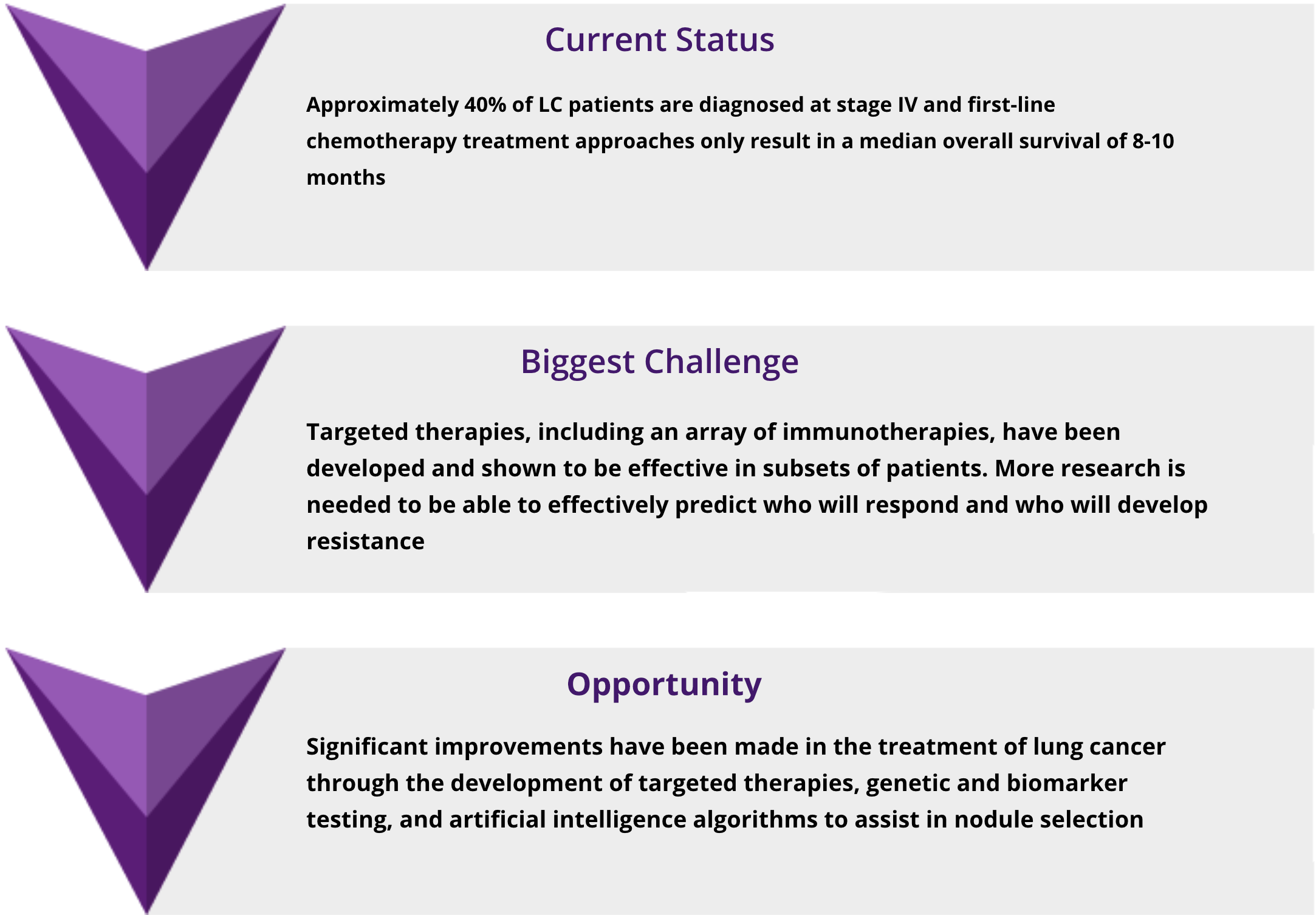
Current Status
Approximately 40% of LC patients are diagnosed at stage IV and first-line chemotherapy treatment approaches only result in a median overall survival of 8-10 months
Biggest Challenge
Targeted therapies, including an array of immunotherapies, have been developed and shown to be effective in subsets of patients. More research is needed to be able to effectively predict who will respond and who will develop
resistance
Opportunity
Significant improvements have been made in the treatment of lung cancer through the development of targeted therapies, genetic and biomarker testing, and artificial intelligence algorithms to assist in nodule selection
